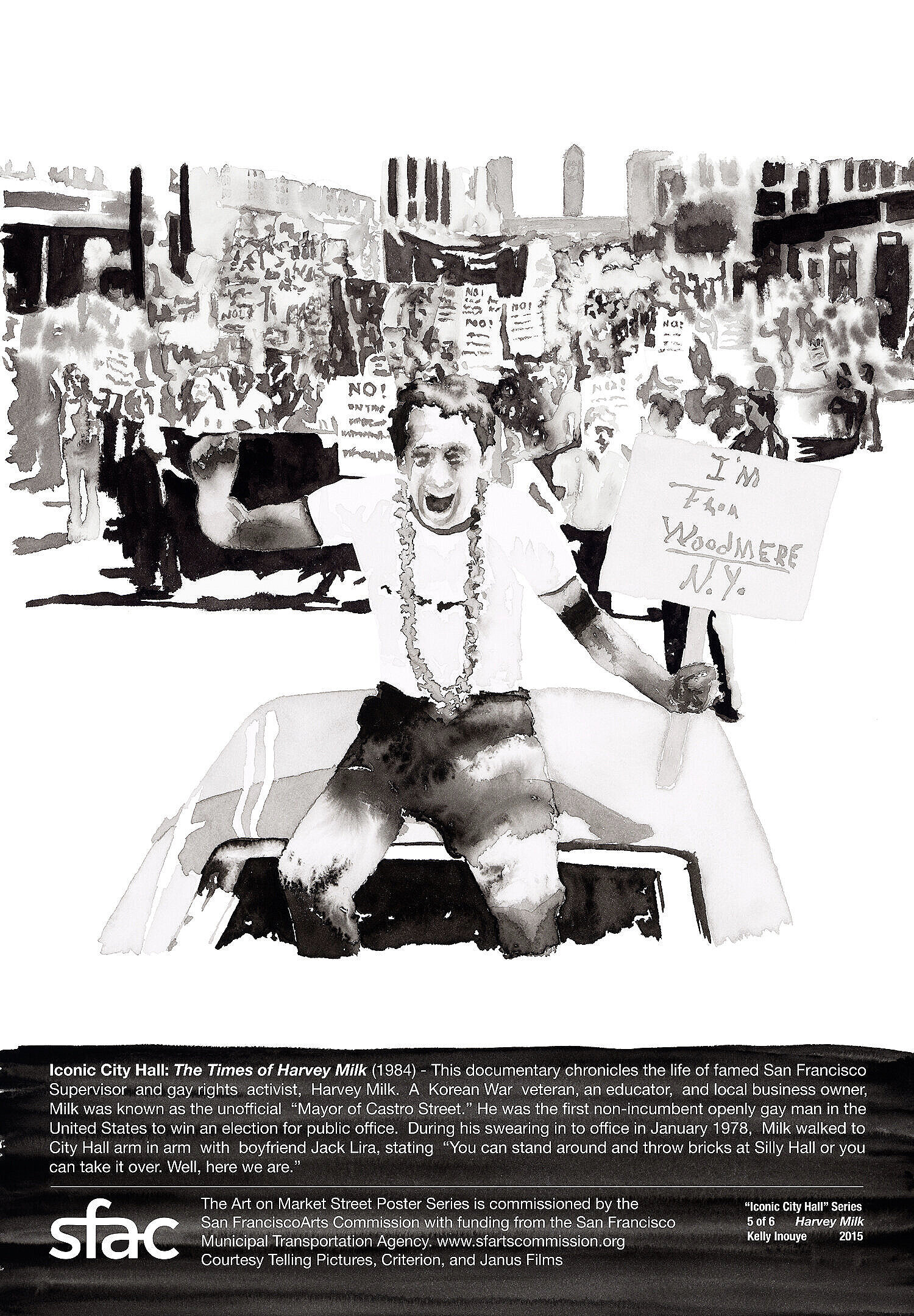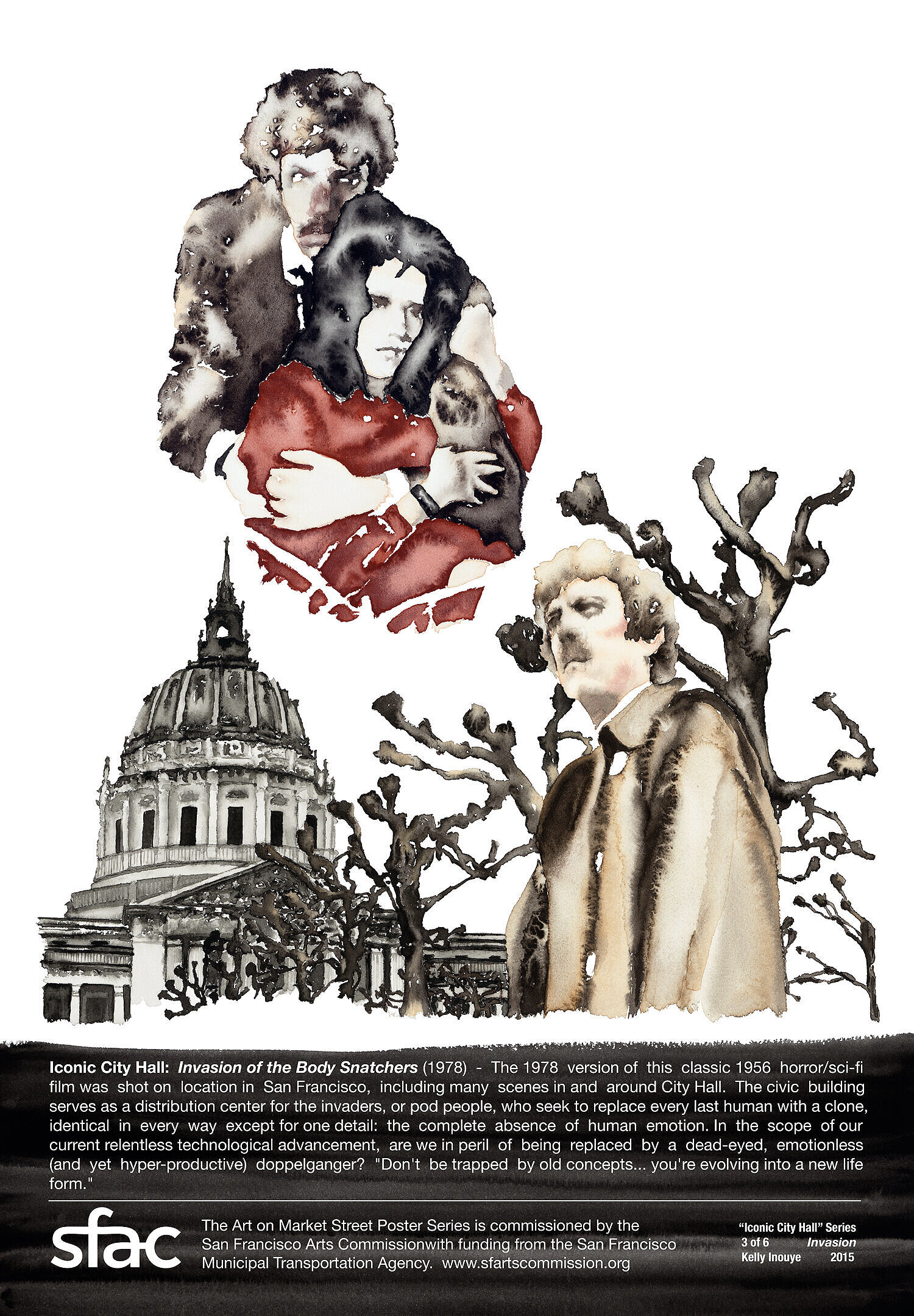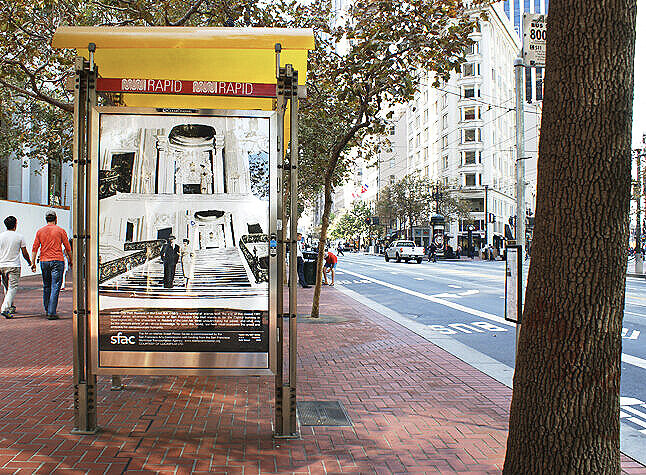In 2015, I created a series of posters to honor the centennial anniversary of the construction of City Hall for the San Francisco Arts Commission. The series documented a selection of films that featured the building, looking at City Hall's role as a "character" in our collective memory. In film, as in life, City Hall represents “the powers that be”, a vessel for peoples’ civic pride and also their desire for change. The posters were on display along Market Street at bus stops between the Embarcadero and 9th.
Press:
The San Francisco Chronicle, “City Hall Centennial Takes a “Surreal” Twist”, by Jesse Hamlin
Dirty Harry, Installation view, Market Street, San Francisco, 2015
Dirty Harry (1971) was filmed entirely in the San Francisco Bay Area and prominently featured the City Hall rotunda, exterior façade, and the mayor's office, where detective Harry Callahan famously informs the mayor of his dubious policy of vigilante justice. The film, which used the historical "Zodiac" killer case as a template, was controversial when released, inspiring debate over issues such a s police brutality, victim's rights, racism, and the nature of law enforcement -- issues that have grown ever more pressing since the film's release.
The Times of Harvey Milk, Installation view, Market Street, San Francisco, 2015
The Times of Harvey Milk (1984) is a documentary that chronicles the life of famed San Francisco Supervisor and gay rights activist, Harvey Milk. A Korean War veteran, an educator, and local business owner, Milk was known as the unofficial "Mayor of Castro Street". He was the first non-incumbent openly gay man in the United States to win an election for public office. During his swearing in to office in January 1978, Milk walked to City Hall arm in arm with boyfriend Jack Lira, stating "You can stand around and throw bricks at Silly Hall or you can take it over. Well, here we are."
Invasion of the Body Snatchers, Installation view, Market Street, San Francisco 2015
Invasion of the Body Snatchers: The 1978 version of this classic 1956 horror/sci-fi film was shot on location in San Francisco, including many scenes in and around City Hall. The civic building serves as a distribution center for the invaders, or pod people, who seek to replace every last human with a clone, identical in every way except for one detail: the complete absence of human emotion. In the scope of our current relentless technological advancement, are we in peril of being replaced by a dead-eyed, emotionless (and yet hyper-productive) doppelganger? "Don't be trapped by old concepts...you're evolving into a new life form."
Mabel and Fatty Visit the World's Fair, Installation view, Market Street, San Francisco, 2015
Mabel and Fatty Visit the World's Fair (1915): During the silent film era the San Francisco Bay Area was a hub of the burgeoning movie industry. In 1915, the year construction was completed at City Hall, two of the biggest comedic starts of the era, Mabel Normand and Roscoe "Fatty" Arbuckle starred in a comedic tour of the Panama Pacific Exposition (also known as "The World's Fair"), which included a tour of City Hall while it was still under construction. The tour was led by former Mayor James Rolph, who led many rebuilding efforts in San Francisco after the Great Quake of 1906. This historical document demonstrates what it means to rebuild a city from the ashes while racing headlong into the future.
Raiders of the Lost Ark, Installation view, Market Street, San Francisco, 2015
Raiders of the Lost Ark (1981): In a handful of scenes from the end of this classic 1981 Indiana Jones adventure, the rotunda of San Francisco City Hall stands in for the Capitol building in Washington DC. The characters in Raiders of the Lost Ark thirst unquenchably for power, and what may be the ultimate power of all - divine knowledge. To save the world, our hero must overcome this greed and embrace his compassionate humanity.










